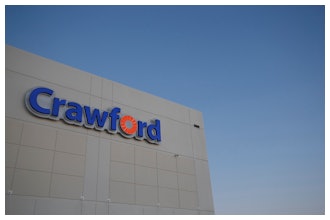Several years ago, I was heading to Belgium for a project. My flight into Brussels was very late and, when I emerged from the airport, it was already getting dark. I hopped on a train for my destination, the city of Liège, and started dozing off as the sun set. We made several stops along the way. At one stop, I vaguely remember an unsettling lurch and some droning announcements in Flemish. I thought to myself, “I wonder what that was all about.” But we started moving again so I didn’t pay any more attention. Eventually, the train arrived at its final stop, a deserted station outside the city of … Genk. Somehow, I ended up on the wrong train! It was probably close to midnight. I was exhausted, irritated and utterly lost. I dragged my bags a couple of kilometers into the city and found an outrageously expensive taxi that took me to Liège.
The next day, my hosts had a great time teasing me about getting “Genked.” Apparently, I had actually boarded the right train at the airport — but at one of the intermediate stops they separate the front half of cars, which proceeds to Liège, while a new engine is hitched to the back half of the train, which heads to Genk. There I was, the oblivious American, asleep on a train that was going the wrong way.
I often think of that train to Genk when talking with distributor executives about their sales forces. Our modest economic recovery has given them hope that their companies are making progress, but deep inside they know something just isn’t right. They don’t believe that their current models are right for the future, and they are struggling to build replacements. In some cases, they are hesitant to confront performance issues with their sales forces because they fear putting their legacy businesses at risk. These executives fear that they may be on the wrong track.
In the industrial space, distributor sales forces continue to be largely self-directed and comprised of generalist reps who “own” the customer relationship. This approach has been successful over the years because it has provided great customer intimacy and a degree of accountability for performance. Margin-based commissions create the perception that reps are motivated to take and hold business. Traditionally, managers didn’t have to micromanage sales professionals — they just needed to hire good ones, set a few ground rules and stay out of the way.
Unfortunately, this model’s past success may be keeping your company from making the changes necessary to face the future. Many reps have invested their entire careers in developing “their” customers, and traditional compensation philosophies have taught them to protect “their” revenue streams. It’s not surprising these reps are reluctant to sell to new customers (it’s uncomfortable, takes a long time and has a low probability of success), expand into new products or services (selling something unfamiliar could jeopardize years of relationship equity) or transition accounts to an inside sales rep. Fundamentally, the current model makes it difficult to develop the new business that distributors need to remain healthy, growing enterprises.
Meanwhile, an entire generation of seasoned sales professionals is approaching retirement; distributors often don’t realize the full implications of those departures to their top lines.
Things look no better further down the income statement. Selling expenses remain high even as margin pressure intensifies. The typical commission essentially locks in a rate of sales productivity. If margin dollars double, so do commissions, and the ratio of input (selling expense) to output (margin dollars) remains static. This is in stark contrast to improvements made in areas such as logistics, purchasing and administration, where distributor productivity has grown by about 2 percent per year for the past several decades. The majority of companies have reached a point where calling the same old play of cutting pay or headcount will not work — all the fat is already gone. Today these moves are likely to lose more in margin dollars than they gain from reductions in selling expense.
Experience from other verticals shows it is possible to obtain profitable growth while protecting the existing revenue base. By systematically examining the needs of customers and restructuring sales and marketing assets to better fit those needs, your sales force can drive sales based on the market’s needs. At Indian River Consulting Group, we call this “market access” and define it as aligning resources to match market opportunities. In essence, it is about taking the resources companies spend providing services that are less valued by customers and redeploying them where they will provide a far higher return on investment.
There are many common examples of over-providing services. Field sales reps might be making weekly “just-in-case” calls to large customers when monthly calls would do. A distributor may be offering the lowest pricing to customers for whom service reliability is a primary supplier selection criterion, or it could be sending an expensive, consultative professional to sell a “value proposition” to a low-level buyer who really doesn’t care.
At the same time, distributors often under-provide services that may be more important for generating profitable growth. It’s pretty common for self-directed sales forces to do little or no real prospecting. Although reps inevitably insist they “see every opportunity” in their territories, market research usually reveals large groups of potential customers that are not even aware that the supplier exists. Used properly, outbound telesales and e-marketing can provide cost-effective awareness and increase reps’ prospect conversions. That said, for many customers, being reliable and easy-to-do-business-with is more important than offering new products or supply chain solutions. For them, investments in customer service, e-commerce and order automation are probably more valuable than any outbound sales activity.
These are all examples of market gaps, which are instances where, as a supplier, you are either providing too much (a positive gap) or too little (a negative gap) of a specific customer service. The key to correcting these gaps is to segment customers based on what they need or want from you. This is not about whether they are a big or small customer, how profitable they are or which industry category you put them in. This is about how and what they want to buy. Often, customers who are in the same business have very different needs because of their organizational structures, histories or market strategies.
Understanding service needs at this level requires both quantitative market data and qualitative insight on customer behavior. Neither of these is likely to come from your sales force. Instead, you must conduct structured, objective research using sources like market studies and executive-level conversations with key customer decision-makers. The insight you gain will be well worth the effort.
The old saying is “structure should follow strategy.” If you do the market analysis well, you are likely to conclude that you need to make significant changes in your sales and marketing organizations. This will almost inevitably involve more specialized selling roles and tactics to serve the same customer in different ways at different points in the sales cycle. This requires more sophisticated sales management practices and new methods of compensation. The new model will involve a transition from a self-directed sales force to one that is strategically led and market-directed.
What I’m describing is not a simple transition, but there are proven ways of getting from point A to point B without taking undue risks. We’ve found that good data is a powerful change management tool because it helps to cut through internal debates and anecdotal evidence. We’ve also learned that if you communicate the changes based on your value proposition, they are often embraced by customers. An account that hasn’t seen your field sales rep in six months may be delighted to get a phone call from your new industry specialist, even if she is located in another city.
The near-term financial rewards of transitioning to a market-driven sales force can be substantial. It’s common for distributors to improve net profit by 2 percentage points or more through these types of realignments. The longer-term impact may be even more important: a sustainable model that supports ongoing productivity improvement and is far more adaptable to the future. And once you’re on the right track, you no longer have to worry about ending up in an unfamiliar and dark place … like Genk.
Steve Deist is a Partner at Indian River Consulting Group, which offers management consulting services to senior distribution and manufacturing executives. For more information on how IRCG can help your business align its resources to match market opportunities, visit ircg.com or email Steve at [email protected].























